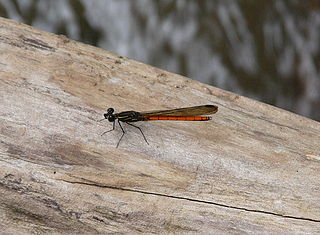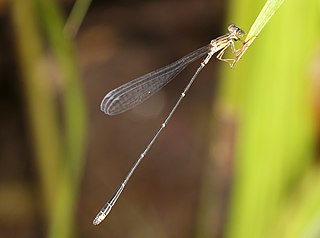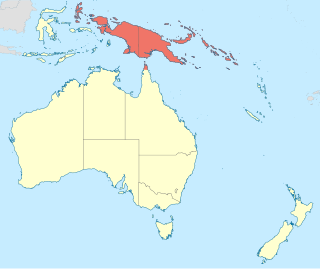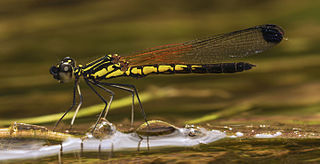
The Lestidae are a rather small family of cosmopolitan, large-sized, slender damselflies, known commonly as the spreadwings or spread-winged damselflies.

The Platycnemididae are a family of damselflies. They are known commonly as white-legged damselflies. There are over 400 species native to the Old World. The family is divided into several subfamilies.

Metacnemis is a genus of damselfly in the family Platycnemididae. It contains one species: Metacnemis valida

Platycypha is a genus of African damselflies in the jewel damselfly family (Chlorocyphidae).

Platycypha caligata, the dancing jewel, is a species of damselfly in the family Chlorocyphidae. It is found in eastern, central and southern Africa from Ethiopia to Angola and South Africa. Its natural habitats include shady parts of subtropical or tropical streams and rivers in forest, woodland, savanna, and shrubland, and shorelines of lakes.

Rhinocypha uenoi is a species of damselfly in the family Chlorocyphidae. It is endemic to Japan. Rhinocypha uenoi are a very endangered species.

The Synlestidae are a family of damselflies commonly known as sylphs or malachites. They occur in South Africa, Australia, and South America.

Isostictidae is a small family of medium-sized to large damselflies restricted to Australia, New Caledonia, and New Guinea. It contains 12 genera and more than 40 species. Members of this family resemble species in the threadtail family (Protoneuridae).

The Synthemistidae are the family of dragonflies commonly known as tigertails, or sometimes called southern emeralds. This family is sometimes treated as a subfamily of Corduliidae. This is an ancient dragonfly family, with some species occurring in Australia and New Guinea. Most species are small in size and have narrow abdomens. Their nymphs are bottom dwellers, and resist droughts by burying themselves very deeply. Synthemistid dragonflies frequently prefer marshy areas, as well as fast-flowing streams. The family Synthemistidae is sometimes called Synthemidae.

The Lestoideidae are a family of damselflies occurring in South-east Asia, New Guinea and Australia. The family comprises two genera and nine species.

Diphlebiidae is no longer recognised as a biological family. It was the name given to a small family of damselflies, the azure damselflies, with species in two genera: Diphlebia and Philoganga. Diphlebia is found in Australia and Philoganga is found in Southeast Asia. They are large and thick-bodied damselflies. They rest with their wings spread out. The Diphlebiidae were also known as Philogangidae.
Thaumatoneuridae is a family of damselflies in the order Odonata. There are at least three genera and about five described species in Thaumatoneuridae.
Libellago finalis, is a species of damselfly in the family Chlorocyphidae. It is endemic to Sri Lanka. It is threatened by habitat loss.

Libellago lineata, river heliodor is a species of damselfly in the family Chlorocyphidae. It is found in many Asian countries.

Heliocypha bisignata, stream ruby, is a species of damselfly in the family Chlorocyphidae. It is endemic to South India where it breeds in hill streams in the southern part of the country.

Rhinocypha tincta is a species of damselfly in the family Chlorocyphidae, commonly known as a Papuan jewel. It is a medium-sized damselfly with a short stout body, it is black with blue markings, and has long dark wings with pterostigma. It has been recorded from South-east Asia, New Guinea and the Solomon Islands in the Pacific, where it inhabits streams.
Calopterygoidea is a superfamily of damselflies in the order Odonata.

Libellago indica, southern heliodor is a species of damselfly in the family Chlorocyphidae. It is found only in South India. It breeds in hill streams and rivers.

Philosinidae is a family of damselflies in the order Odonata. There are at least 2 genera and about 12 described species in Philosinidae, found mainly in southeast Asia.



















